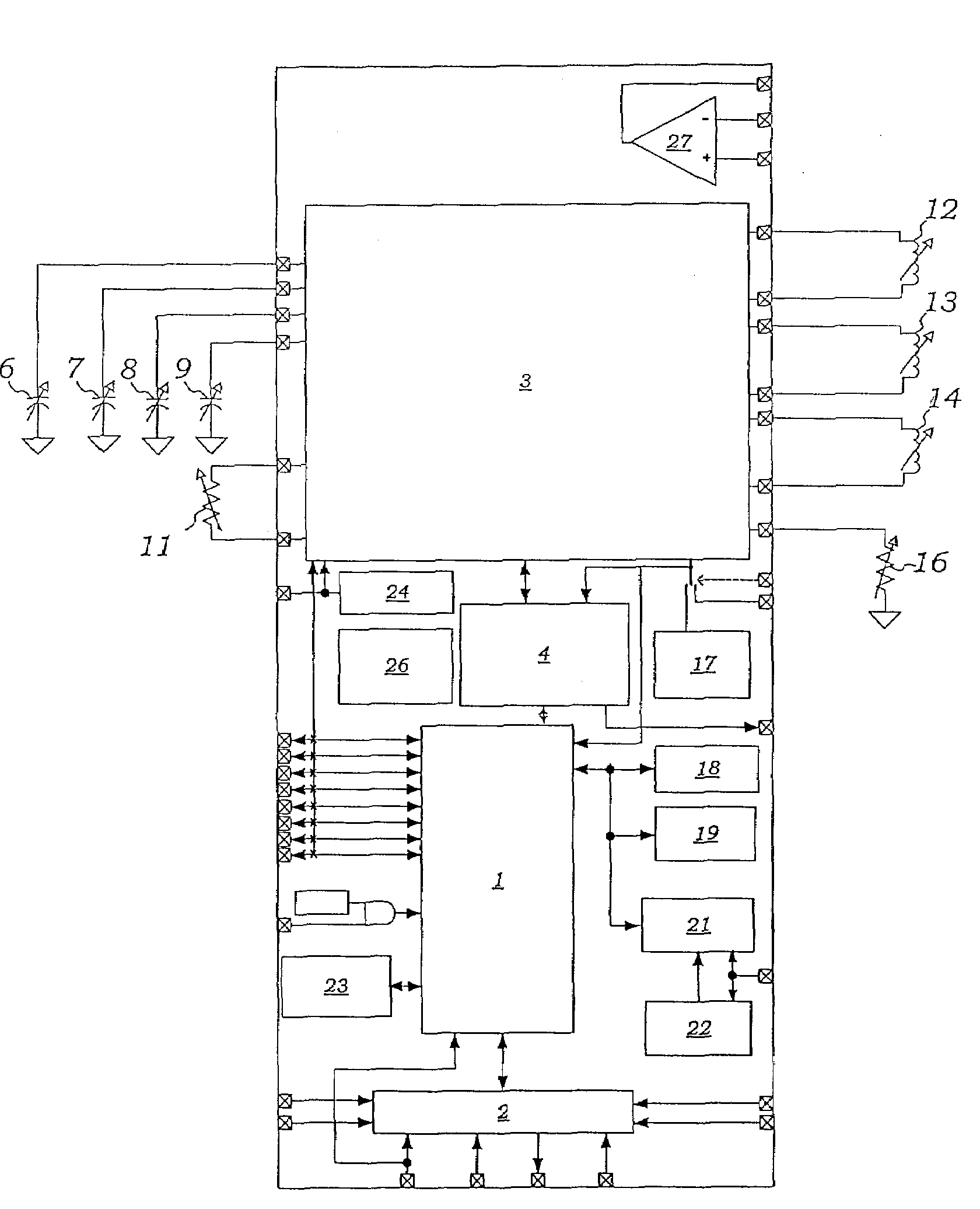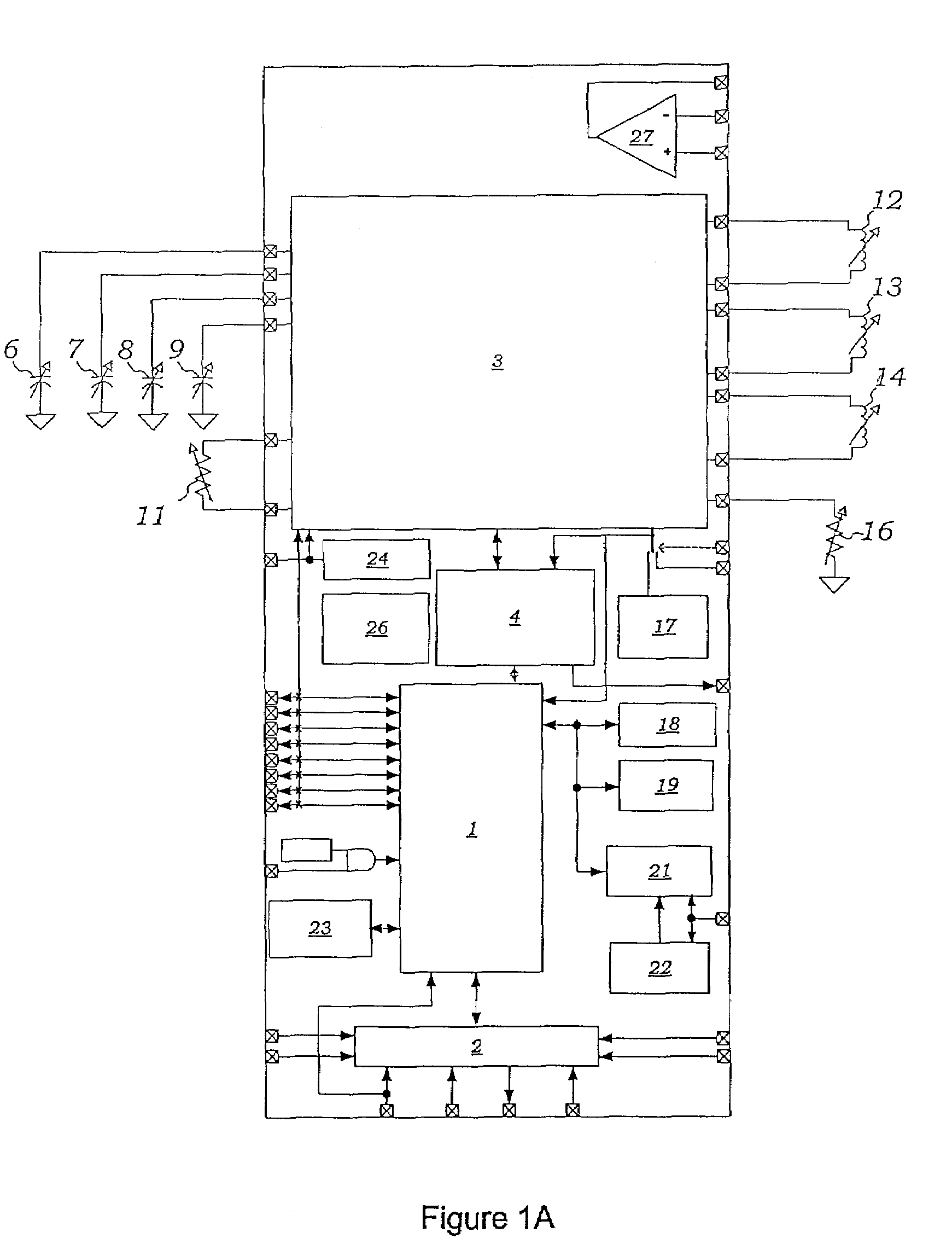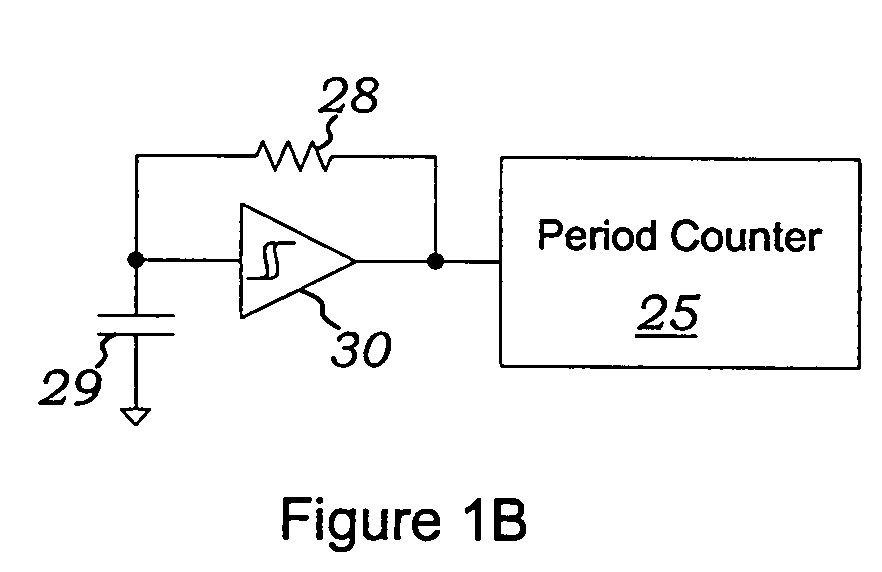Method for signal extraction in a universal sensor IC
a signal extraction and sensor technology, applied in the field ofsensor data acquisition systems and methods, can solve the problems of limiting the cost efficiency of such parts, limiting the use and utilization of analog technologies, and not being able to successfully cross the 0.35 micron threshold of typical analog technologies, etc., to achieve dynamic control of the bit resolution of the signal conversion, the effect of small ic and low cos
- Summary
- Abstract
- Description
- Claims
- Application Information
AI Technical Summary
Benefits of technology
Problems solved by technology
Method used
Image
Examples
Embodiment Construction
[0041]FIG. 1A is a block diagram of a first embodiment of the circuit in accordance with the present invention. A microprocessor performs most of the calculation functions of the device. A suitable microprocessor is a R80515 microprocessor but any suitable microprocessor could be substituted. An SPI and I2C (SPI / I2C) interface 2 is connected to microprocessor 1. SPI / I2C interface 2 provides suitable output signals in a variety of formats. An LR & RC Sensor Oscillator circuit 3, which is further detailed in FIG. 1B where the primary building block is a Schmitt trigger oscillator 30, is connected to microprocessor 1 by means of a Period Counter unit 4, 25. Four capacitive sensor units 6, 7, 8 and 9 and a resistive sensor 11 are shown connected to Oscillator 3 in this embodiment although it should be realized that the number of sensors necessary will vary with the application. Sensors 6, 7, 8, 9, and 11 are passive sensors connected in an RC oscillator configuration. Three inductive se...
PUM
 Login to View More
Login to View More Abstract
Description
Claims
Application Information
 Login to View More
Login to View More - R&D
- Intellectual Property
- Life Sciences
- Materials
- Tech Scout
- Unparalleled Data Quality
- Higher Quality Content
- 60% Fewer Hallucinations
Browse by: Latest US Patents, China's latest patents, Technical Efficacy Thesaurus, Application Domain, Technology Topic, Popular Technical Reports.
© 2025 PatSnap. All rights reserved.Legal|Privacy policy|Modern Slavery Act Transparency Statement|Sitemap|About US| Contact US: help@patsnap.com



